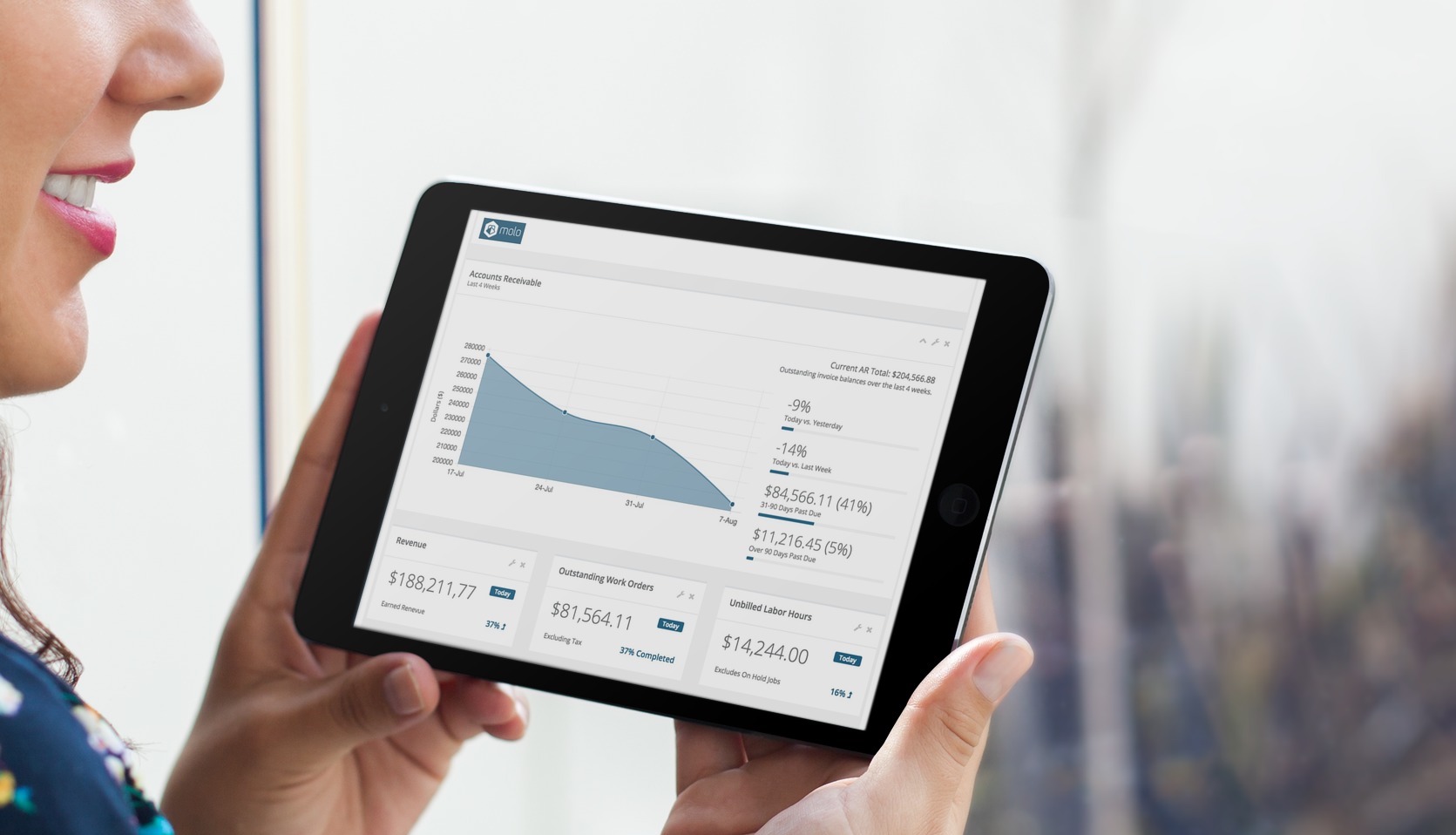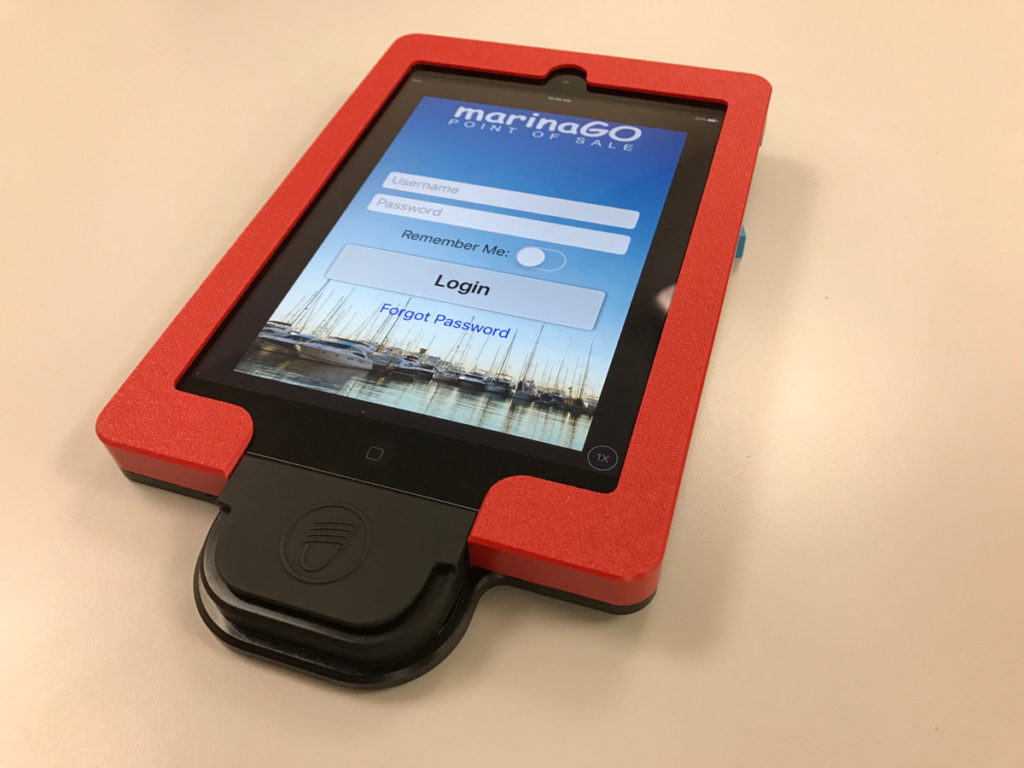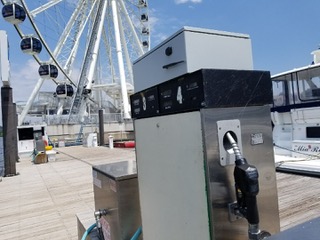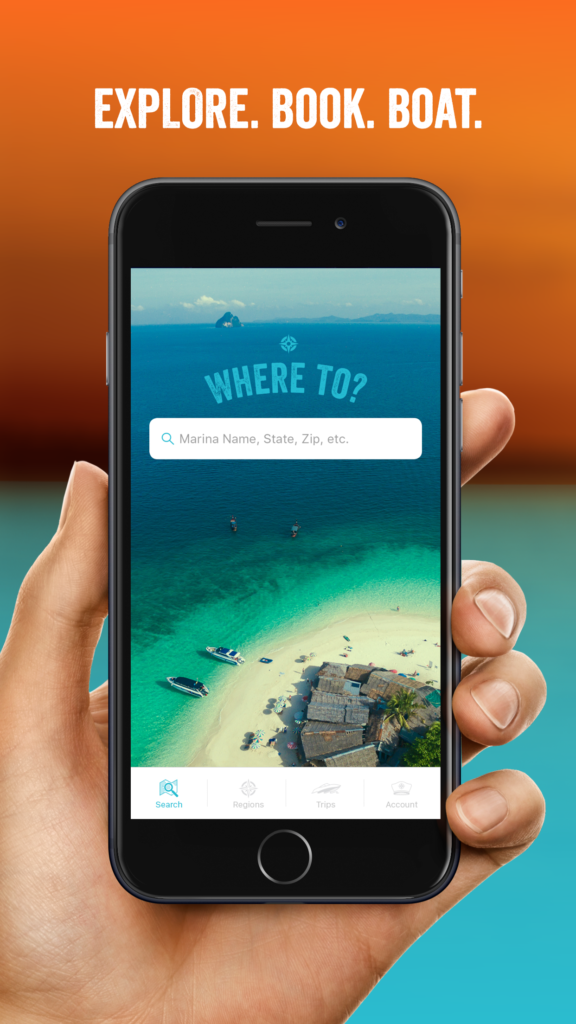
From Smartphones to Smart Marinas: How Technology and Automation Is Aiding Operations
Published on September 1, 2017Marinas have long used software to manage operations more efficiently – for slip reservations, accounting, customer communication, and a growing list of automated features that keep marina managers at the desk less and out at the dock more. While the marina industry has not been quick to adopt technology at a wild pace, it is gathering speed.
In a world where plastic credit cards and Cable TV are becoming obsolete, mobile applications and automation technology are beginning to reshape the marina industry – particularly at the power pedestal, at fuel docks, and at the slip. The most recent advances in smartphone technology, web-based cloud applications and automation software is poised to change the marina industry significantly.
Marina managers want to be on the move, and mobile applications and handheld devices give them that freedom. Marina management software has long aided the paperwork process and communicating with customers. More recently, mobile and cloud applications have given operations access to all its data at the docks or anywhere, and online payment solutions have expedited the check-in process for boaters and marina employees.
Power Pedestals Connecting Boaters to More Than Just Electricity
Long before tablets and smartphones became regular dockhand equipment, power pedestal technology has changed rapidly to meet the changing demands of boats and boater comforts.
The needs of boats at the dock and what customers want at the slip is what truly drives technological advancement for marina infrastructure. For years, larger and larger boats have changed slip configuration at marinas, and facilities continue to gear up for larger and larger power needs from these massive vessels.
Remote Management
Eric Farley, director of HyPower and Ecommerce Sales for HydroHoist Marine Group, Inc., said remote management of pedestals does even more to keep operators away from the desk and still connected to data and information (reservation information, pedestal readings, accounting data, customer communication), which might have previously tied operators to the office.
The next step for some transient facilities will be fully automated pedestals, and some have already taken that step. The jump from internet and mobile to cloud-based operations is giving marinas more options and technology that, in the right market, could bring additional automation to transient slips.
At this time, cost is a deterrent for many transient businesses interested in cloud management, Farley said. However, many marinas are operating with less employees and could make use of technology and software to communicate with customers, set reservations, and even remotely turn on power at transient slips before a customer arrives.
Full Automation
MarineSync, an integrated wireless monitoring and control company, is seeing a movement toward fully automated transient slips at some marinas. The company has a project at The Wharf in Washington, D.C., to install a kiosk system on its transient slips. MarineSync equipment will be installed on existing Marina Electrical Equipment pedestals in August 2017.
Austin Bleier, president of MarineSync Corporation, describes the Remote Utility Monitoring and Control (RUM)Kiosk as, “an alternative to traditional, physical, payment cabinets and dockside payment gateways.” With internet and smartphone use by customers growing exponentially, physical kiosks are quickly becoming obsolete, he said. To access the RUM Kiosk, boaters download the app to their smartphones, select a pedestal, select a term, enter payment and switch on/off pedestal utilities. Once payment is authorized, an indicator light on the pedestal will illuminate and the boater can reset the breaker to energize the pedestal, all without a marina employee.
The RUM Kiosk can also integrate with third-party security systems to provide transient customers with temporary gate codes and other access credentials for the facility.
The company has long deployed RUM systems across the world. The MarineSync Network Base Station, the heart of the RUM system, is a self-contained communication hub, handling all communications between pedestals and the cloud, no Wi-Fi or network connections.
This gives owners (or in automated transient facilities, gives customers) the ability to remotely control the pedestal. MarineSync services a facility in the British Virgin Islands, owned by an Italian company. The facility caters to yacht clubs and works often with a small crew. If a boat comes in late at night, the owners in Italy can control the pedestals and turn on power 3,000 miles away with a keystroke.
Access and control is important on both the billing side – collecting meter information to bill customers automatically – and also with respect to pedestal controls and integration with other systems. Bleier said the company has worked for a long time at the data collection process to make it as generic as possible, so it can be used in different ways or with different systems, or with different APIs (application programming interfaces, which bring data from one system to another). MarineSync data was designed to work with any marina management systems or other third-party APIs to integrate its data seamlessly.
Marina Management Software Platforms Poised to Change How the Industry Communicates

Software developers focused on marina management platforms have brought innovation to docks and to customer communications and interactions. Still, even the most technology-focused companies in the marina industry don’t want to replace good customer service, but give marinas more time to focus on hospitality.
“When it comes to mobile technology, it’s basically allowing the marinas and their staff to be more mobile too, not chained down to the desk or the counter,” said Vance Young of Scribble Software Inc., a marina management software solutions provider.
In the cloud environment, Young said Scribble wants to empower the consumer (boaters) to take care of certain things themselves (making reservations, locating invoices or paying dock fees).
The Cloud
Software technology and internet brought automation to accounting, business performance data analysis and customer communication services for marinas and boatyards, and the cloud-based solutions are making that automation real-time and accessible anywhere.
Young said even the use of smartphone apps will have a limited time span, as more technology runs on the cloud vs. mobile internet applications.
Software applications have long been cleaning up filing cabinets and endless paperwork in marina offices, but cloud technology can file accounting paperwork and generate reports in real-time. Cloud-based management systems also allow owners and managers to operate the business from anywhere anytime.
“We see a lot of marina managers wanting much more to be on the move,” said Lucas Isola, co-founder of Molo, a management platform for marine businesses.
Marinas also are looking to improve their check-in process, Isola said. Similar to the hotel industry, which frequently offers mobile check-ins, he sees some marinas moving in that direction eventually – mobile customer check-ins, which alerts the staff to a boater’s arrival.
 Molo sees automation at the fuel dock as a big trend in the marina industry too. The company recently partnered with FuelCloud to offer management solutions for the fuel dock. National Harbor Marina, operated by IGY Marinas, in Smoots Bay in Maryland, implemented the new solution at its fuel docks.
Molo sees automation at the fuel dock as a big trend in the marina industry too. The company recently partnered with FuelCloud to offer management solutions for the fuel dock. National Harbor Marina, operated by IGY Marinas, in Smoots Bay in Maryland, implemented the new solution at its fuel docks.
The software has the capability to allow boaters to use smartphones and a pin number to unlock the fuel pump, though most operators issue those codes to dockhands, said Kevin Bretthauer of FuelCloud.
The company has long been in the business of tracking and monitoring liquid cargo in many industries including the heavy-duty construction and aviation industries. The family-owned business has been in the fuel industry for four generations. Bretthauer said in talking with Molo, he saw some similarities between the larger fuel industry and the marina industry overall – a lot of money in the industry, but not a ton of innovation, he said. In July 2016, FuelCloud launched a product with Molo to manage fuel transactions at the dock.
Inventory Control
“The biggest challenge with fuel, in general, is it’s liquid. It’s hard to inventory; it grows and shrinks,” Bretthauer said. With smart devices on the pump, a meter can electronically capture transactions without the fear of miscalculations, transcription errors or theft.
With the cloud-based system, “everything is live. Everything is real-time, and we have an open API, so we can move data not only into our system, but also into almost any other system,” Bretthauer said.
Transient docks, like fuel docks, where boats come and go, present opportunities for automation and connecting with boaters in a mobile environment. While Molo said it sees a lot of interest from companies outside the U.S. for automated services at transient slips, it’s a newer concept for the U.S. market.
Mike Melillo, CEO of Dockwa, thinks the marine industry was right to refuse technology, or adopt it slower than other industries, when nothing out there met the specific needs of marinas and boaters.
“I think every industry is being disrupted by technology in some form,” Melillo said. While some work is still left to be done in the marine industry as whole, he said, there been a shift recently, away from pen and paper, toward embracing new technology.
Online Reservation Services Continue to Drive Innovation, Connecting Marinas and Boaters
Dockwa does many things, including a full suite of management software services, but much of its focus has been on transient business and reservation services. Earlier this year, Dockwa purchased Marinas.com, helping to solidify its place in the online reservation market and as a marina resource. With 150,000 boaters in its network and 27,000 marinas, it’s connecting the two.
In the month of July, Dockwa said that of its reservations, 42 percent of requests came after 4 p.m. In many cases, those reservations would sit until the next morning. With automated reservation services like Dockwa, marinas can automatically receive and confirm reservations based on the parameters that it has set. Some marinas may want to confirm reservations manually. Dockwa customer Clayton Harbor has processed around 1,500 reservations this year, and not manually confirmed one of them.
A technology company is also prime to attract younger boaters – something the entire industry is focused on. Dockwa is leveraging its network to drive online reviews. It was a big focus for the company this summer, which is uniquely positioned to provide reviews with verified stays, in an environment that is attractive and familiar to young boaters.
While some comparisons can be drawn between the hotel industry and marinas, there are also significant differences. Renting a room is different than renting a slip, and add in weather, and the marina business must deal with a lot more variables, Melillo said.
Software platforms and reservation services can automate the reservation and customer communication process to give the marina more time to focus on the small variables on-site that make or break a visit for a transient boater.
Marina Travel Agents
Some reservation companies are also focused on helping customers with the logistics and customer service side of online reservations. Launched in June 2015, Snag-A-Slip started as a business school idea for an MBA course at the University of Maryland, and eventually won the Shore Hatchery Entrepeneurship Competition, launching the company with a sizeable award.

“I always describe us as a travel agency with a technology solution,” said Page Holden, vice president of marketing for Snag-A-Slip.
The company has focused a lot of attention on attaining high Google searches, and maintaining partnerships to boost its boater and marina reach, but the company also helps facilitate confirmation emails and communications with boaters for codes or conceirge services upon arrival.
“We continue to support the marina in customer service leading up to the stay,” Holden said. “We don’t want to be a brand that doesn’t support customers, and we’re boaters and we want boaters to know, if you are stuck and don’t know what to do, someone is looking out for you. If the marina operators are out or busy, we can be that resource for them.”
The technology company also did its research, which showed that boaters were still planning trips via computers and laptops. Developing a great web experience, Holden said, to increase how the company was found through organic searches and paid efforts was key to a good internet presence and gaining new boater interest. The company also recently launched its mobile app version of the reservation service.
“We feel that our dedication to digital marketing is a value add to our marina partners who don’t have the time, experience or financial resources to manage a similar program,” Holden said.
The Vacancy Sign
Even more laser focused on the online transient reservation business, SlipSure is directed at day of bookings for open marina slips. The company launched in September 2016, after winning a local start-up competition.
As long time cruisers, one factor that drove product development was, “We would plan our cruises well in advance and push through miserable conditions to stick to that plan,” said co-founders Paul and Sherrie Norton. Their market research has shown a shift to more short-term planning for cruisers. In talking with marinas, the company estimates that 50 percent of transient bookings coming in the day of. The company used restaurant and hotel apps Open Table and Hotel Tonight as a model for its version for transient boaters and open slips.
SlipSure is also aware of the shrinking boating market and the need to attract new boaters. Technology like its app, “appeals to less experienced boaters; it makes it easier for them,” said Paul Norton.
Through the smartphone app boaters can see what’s available and make instant reservations. For marinas with open slips, “we’ve created a vacancy sign to communicate that they have a slip open,” Norton said.
Technology Businesses Continue to Focus on Aiding Customer Service, Not Replacing It
Cloud-based technology has given rise to significant integration among marina operations departments and systems and the possibilities for more. Yet, over and over, the conversations with industry technology leaders came back to the importance of customer service in the marina industry.
Dockwa studied the customer reservation process and interactions between marinas and boaters, detailing approximately 18 to 22 steps in the reservation process, depending on the facility. “Back and forth, back and forth,” Melillo said. While he said the company’s focus in not to disintermediate between boaters and marinas, or do away with dockhands, it is focused on using technology to simplify or automate those steps and give marina employees more time to focus on the personal touch on the backend.
“We look at it as a way to simplify the exchange between boater and marina,” Melillo said. Where the recreational boating industry competes with other recreations for boaters time and money, technology could be an important key to making it more accessible.
Similarly, marinas always want to do more with less. “I think a smart marina is starting to look at technology as a solution to stressed resources,” said Holden of Snag-A-Slip.
Future Integration
As the industry moves toward more integration between all its systems via the cloud, more facilities will embrace new technology.
“I think if you really want to talk about in my mind what a marina might look like in the future is it’s going to be a lot of different independent systems, sharing data pretty seamlessly. That’s where we’re seeing a lot of traction,” said Bretthauer of FuelCloud.
Bretthauer is also familiar with the trucking industry, where “smart” vehicles carry their own data through RFID systems. He sees similar applications for boats being something in the near future.
FuelCloud also recognizes the need for new technology to be designed to work with older equipment. “Things that you design today have to work with what has already been used,” Bretthauer said.
In the RV market, HydroHoist said, automation for renting space and utilities is more common. Farley said a similar growth in automation for the marina industry could be coming, but it will not replace employees at the docks, just give them more time to focus on customer service.
Farley also sees the use of motion sensors and cameras on the pedestal, as both a security and customer service feature, as new technology of the future. HydroHoist is familiar with sensor technology in its boatlift applications, but at the pedestal, Farley said cameras are probably more practical. The marine environment to consider – wind, water and birds –is more of an issue for sensors. Cameras are also more economical, take less power to operate and actually do more work than a sensor, by giving operators a direct view at the slip.
In a multifaceted and dispersed industry with no two marinas alike, each will adopt technology that fits its facility, its budget and its boaters, and at its own pace. Some may be slower than others to introduce mobile apps and cloud-based services at the docks, but more and more, technology and automation at marinas will become a reality for many. In many ways, the marine industry has some catching up to do, and as the market for technology at marinas grows, so will that technology.
| Categories | |
| Tags |




